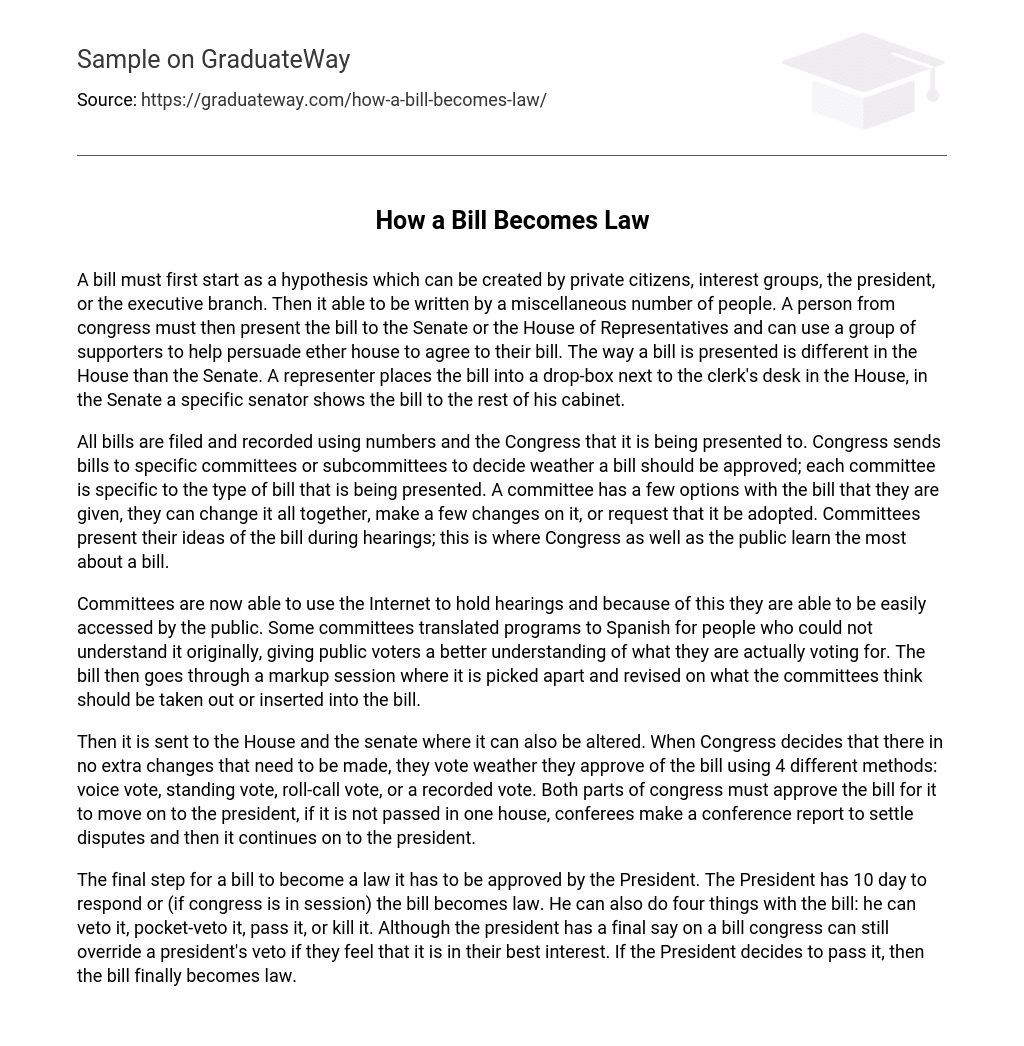A bill must first start as a hypothesis which can be created by private citizens, interest groups, the president, or the executive branch. Then it able to be written by a miscellaneous number of people. A person from congress must then present the bill to the Senate or the House of Representatives and can use a group of supporters to help persuade ether house to agree to their bill. The way a bill is presented is different in the House than the Senate. A representer places the bill into a drop-box next to the clerk’s desk in the House, in the Senate a specific senator shows the bill to the rest of his cabinet.
All bills are filed and recorded using numbers and the Congress that it is being presented to. Congress sends bills to specific committees or subcommittees to decide weather a bill should be approved; each committee is specific to the type of bill that is being presented. A committee has a few options with the bill that they are given, they can change it all together, make a few changes on it, or request that it be adopted. Committees present their ideas of the bill during hearings; this is where Congress as well as the public learn the most about a bill.
Committees are now able to use the Internet to hold hearings and because of this they are able to be easily accessed by the public. Some committees translated programs to Spanish for people who could not understand it originally, giving public voters a better understanding of what they are actually voting for. The bill then goes through a markup session where it is picked apart and revised on what the committees think should be taken out or inserted into the bill.
Then it is sent to the House and the senate where it can also be altered. When Congress decides that there in no extra changes that need to be made, they vote weather they approve of the bill using 4 different methods: voice vote, standing vote, roll-call vote, or a recorded vote. Both parts of congress must approve the bill for it to move on to the president, if it is not passed in one house, conferees make a conference report to settle disputes and then it continues on to the president.
The final step for a bill to become a law it has to be approved by the President. The President has 10 day to respond or (if congress is in session) the bill becomes law. He can also do four things with the bill: he can veto it, pocket-veto it, pass it, or kill it. Although the president has a final say on a bill congress can still override a president’s veto if they feel that it is in their best interest. If the President decides to pass it, then the bill finally becomes law.





